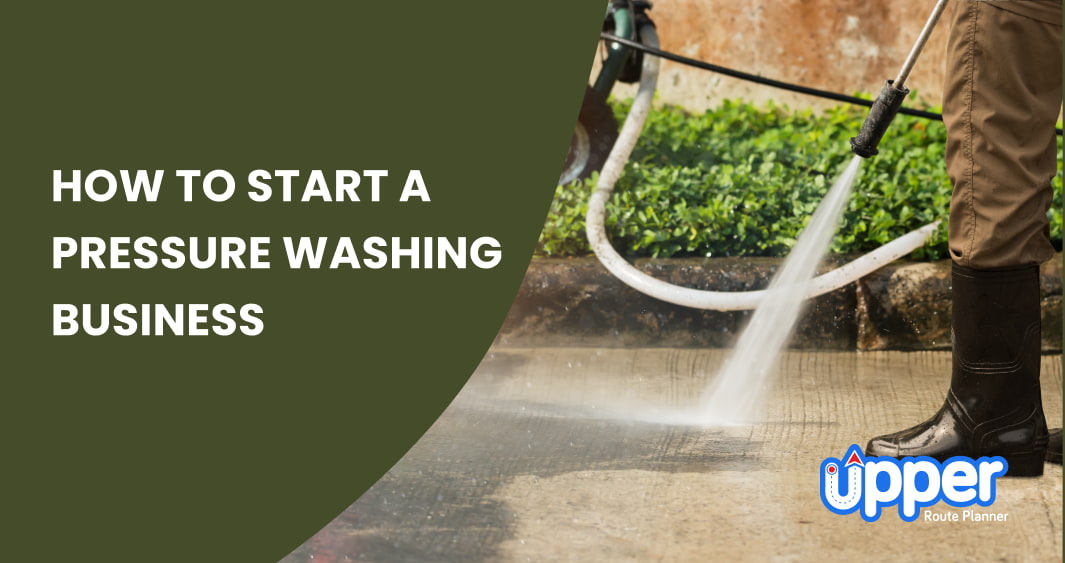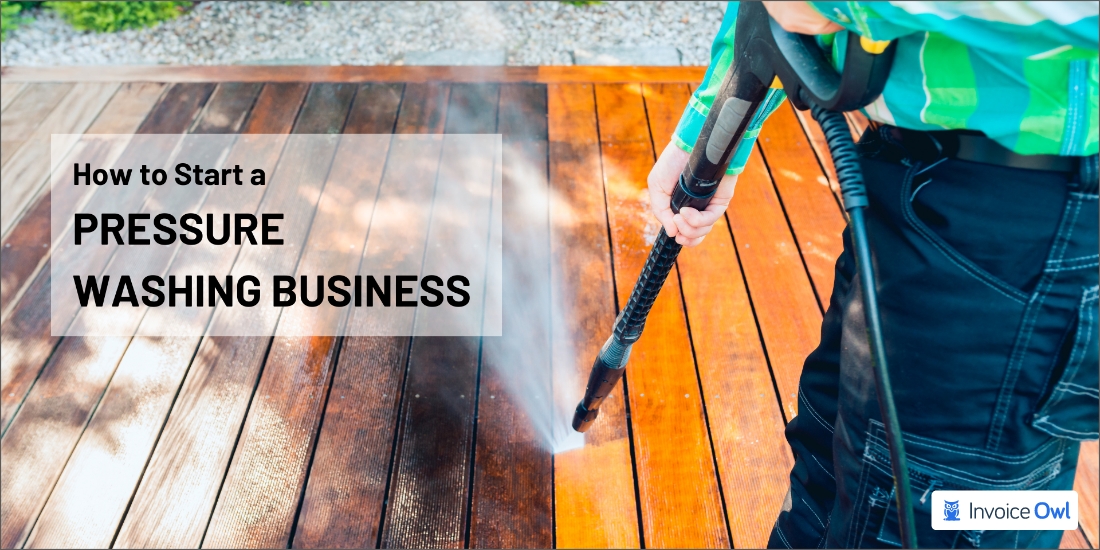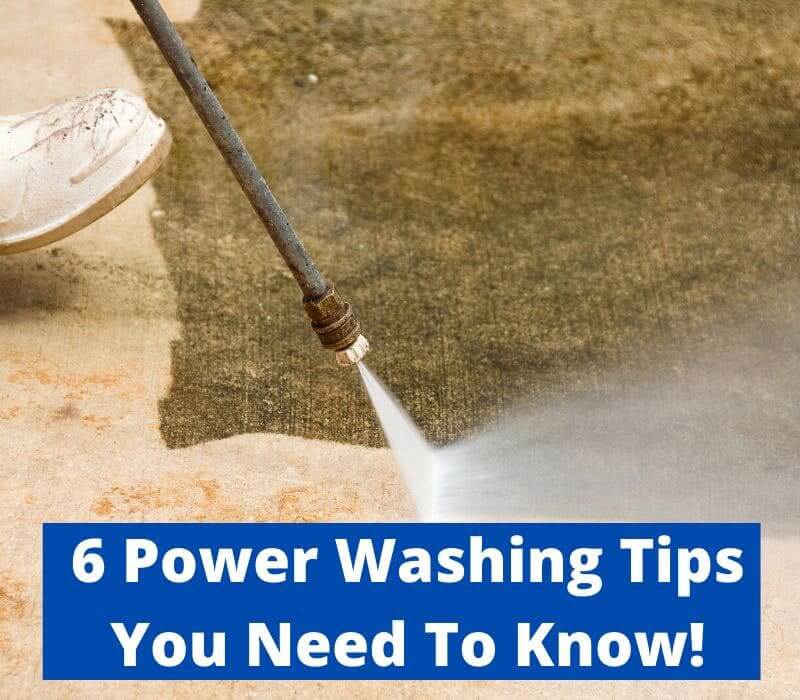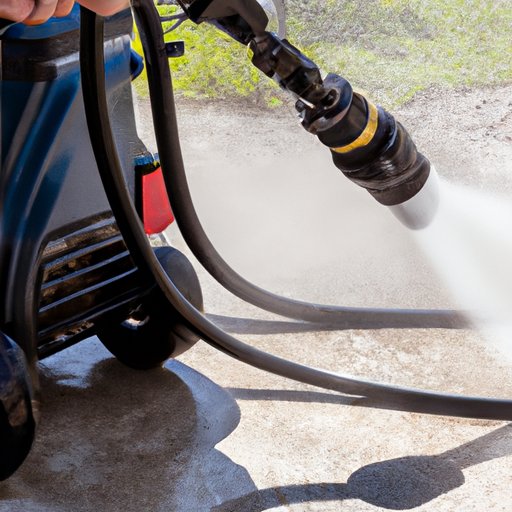Understanding the Basics of Pressure Washing
Pressure washing is a highly effective method for cleaning a variety of surfaces, from driveways and sidewalks to decks and siding. By using a high-pressure stream of water, pressure washing can remove dirt, grime, and other substances that can damage or discolor surfaces over time. To get started with pressure washing, it’s essential to understand the basics of the process and the equipment involved.
One common misconception is that pressure washing and power washing are interchangeable terms. However, power washing typically uses hot water, whereas pressure washing uses cold water. While both methods can be effective, pressure washing is often preferred for cleaning delicate surfaces or for removing dirt and grime from surfaces that don’t require the intense heat of power washing.
When it comes to pressure washing, the right equipment is crucial. A pressure washer typically consists of a pump, a hose, and a nozzle or spray tip. The pump provides the pressure needed to force the water through the hose and out of the nozzle, while the nozzle or spray tip controls the direction and spread of the water stream. By choosing the right nozzle or spray tip, you can customize the pressure washing process to suit the specific surface you’re cleaning.
Before you start pressure washing, it’s essential to understand the importance of using the right techniques and equipment. This includes selecting the correct pressure setting, nozzle type, and cleaning solution for the surface you’re cleaning. By taking the time to learn about the basics of pressure washing, you can ensure a safe and effective cleaning process that produces professional-looking results.
For those looking to learn how to start pressure washing, it’s recommended to begin with a basic understanding of the equipment and techniques involved. This includes familiarizing yourself with the different types of pressure washers, nozzles, and cleaning solutions available. By taking the time to learn about pressure washing, you can unlock the full potential of this powerful cleaning method and achieve professional-looking results on a variety of surfaces.
Choosing the Right Pressure Washer for Your Needs
When it comes to selecting a pressure washer, there are several factors to consider to ensure you choose the right one for your needs. One of the most important considerations is the power source. Pressure washers can be powered by electricity, gas, or diesel, each with its own advantages and disadvantages. Electric pressure washers are ideal for small to medium-sized cleaning tasks and are often quieter and more environmentally friendly than gas-powered models. Gas-powered pressure washers, on the other hand, are more powerful and suitable for larger cleaning tasks, but can be noisier and produce more emissions. Diesel-powered pressure washers are typically used for heavy-duty commercial cleaning applications.
Another key factor to consider is the pressure output of the pressure washer. Measured in pounds per square inch (PSI), pressure output determines the cleaning power of the machine. For most residential cleaning tasks, a pressure washer with a pressure output of 1,500 to 3,000 PSI is sufficient. However, for more heavy-duty cleaning tasks, such as cleaning driveways or sidewalks, a pressure washer with a higher pressure output of 3,000 to 4,000 PSI may be necessary.
Flow rate is also an important consideration when selecting a pressure washer. Measured in gallons per minute (GPM), flow rate determines the amount of water used by the machine. A higher flow rate can result in faster cleaning times, but may also increase water consumption. For most residential cleaning tasks, a pressure washer with a flow rate of 2 to 4 GPM is sufficient.
Nozzle types are also an important consideration when selecting a pressure washer. Different nozzle types are designed for specific cleaning tasks and can greatly impact the effectiveness of the cleaning process. Wide fan tips are ideal for cleaning large surfaces, such as driveways and sidewalks, while narrow fan tips are better suited for cleaning smaller surfaces, such as decks and siding. Rotary nozzles are designed for heavy-duty cleaning tasks and can be used to clean surfaces with heavy dirt and grime buildup.
Some popular pressure washer brands and models include Karcher, Generac, and AR Blue Clean. Karcher is known for its high-quality and durable pressure washers, while Generac offers a range of pressure washers with advanced features such as variable pressure control. AR Blue Clean is a popular choice for residential cleaning tasks and offers a range of affordable and easy-to-use pressure washers.
When learning how to start pressure washing, it’s essential to choose the right pressure washer for your needs. By considering factors such as power source, pressure output, flow rate, and nozzle types, you can ensure you choose a pressure washer that is effective and efficient for your cleaning tasks.
Preparing Your Space for Pressure Washing
Before starting a pressure washing project, it’s essential to prepare the area to be cleaned. This includes clearing the space of any obstructions, such as furniture, plants, and other items that could interfere with the cleaning process or get damaged by the high-pressure water stream. Remove any loose items, such as toys, bicycles, or gardening equipment, and relocate them to a safe area.
In addition to clearing the space, it’s also important to cover surrounding surfaces that could be damaged by the pressure washing process. This includes windows, doors, and landscaping, such as plants, flowers, and trees. Use drop cloths or plastic sheets to cover these surfaces and prevent damage from the high-pressure water stream.
When preparing your space for pressure washing, it’s also important to consider the surface itself. Different surfaces require different levels of preparation. For example, if you’re pressure washing a driveway or sidewalk, you may need to remove any loose debris, such as rocks or twigs, before starting the cleaning process. If you’re pressure washing a deck or siding, you may need to remove any loose boards or trim to ensure a thorough cleaning.
Learning how to start pressure washing requires attention to detail and a thorough understanding of the preparation process. By taking the time to clear the space, cover surrounding surfaces, and prepare the surface itself, you can ensure a safe and effective cleaning process that produces professional-looking results.
It’s also important to note that some surfaces may require special preparation before pressure washing. For example, if you’re pressure washing a surface with a lot of dirt or grime buildup, you may need to use a cleaning solution or detergent to help loosen the dirt before starting the cleaning process. If you’re pressure washing a surface with a lot of oil or grease stains, you may need to use a degreaser or other specialized cleaning solution to help remove the stains.
By taking the time to properly prepare your space for pressure washing, you can ensure a safe and effective cleaning process that produces professional-looking results. Remember to always follow the manufacturer’s instructions for your pressure washer and to take necessary safety precautions to avoid injury or damage.
Safety Precautions and Protective Gear
When operating a pressure washer, it’s essential to take necessary safety precautions to avoid injury or damage. One of the most critical safety precautions is wearing protective gear, including gloves, safety glasses, and a face mask. Gloves protect your hands from the high-pressure water stream and any debris that may be dislodged during the cleaning process. Safety glasses protect your eyes from any debris or water spray, while a face mask protects your face and respiratory system from any cleaning solutions or debris.
In addition to wearing protective gear, it’s also important to be aware of potential hazards when operating a pressure washer. Electrical shock is a significant risk when using a pressure washer, especially when cleaning near electrical outlets or in wet conditions. To mitigate this risk, make sure to use a ground fault circuit interrupter (GFCI) and keep the pressure washer at least 10 feet away from any electrical outlets.
Slips and falls are also a common hazard when operating a pressure washer. To prevent slips and falls, make sure to wear non-slip shoes or boots and ensure the surface you’re cleaning is clear of any debris or obstacles. It’s also essential to maintain a safe distance from the surface you’re cleaning to avoid being knocked off balance by the high-pressure water stream.
When learning how to start pressure washing, it’s crucial to understand the importance of safety precautions and protective gear. By taking the necessary precautions and wearing protective gear, you can ensure a safe and effective cleaning process that produces professional-looking results.
Other safety precautions to consider when operating a pressure washer include:
- Reading the manufacturer’s instructions and safety guidelines before operating the pressure washer
- Ensuring the pressure washer is properly assembled and maintained before use
- Using the correct cleaning solution and nozzle type for the surface you’re cleaning
- Avoiding the use of high-pressure settings on delicate surfaces
- Keeping children and pets away from the cleaning area
By following these safety precautions and wearing protective gear, you can ensure a safe and effective pressure washing experience.
Basic Pressure Washing Techniques and Tips
Mastering the art of pressure washing requires a combination of technique, patience, and practice. To get started, it’s essential to understand the different nozzle types and how to use them effectively. Here are some basic pressure washing techniques and tips to help you achieve professional-looking results:
Wide Fan Tips: These nozzles are ideal for cleaning large surfaces, such as driveways, sidewalks, and decks. They produce a wide fan of water that covers more area, making them perfect for cleaning expansive spaces. To use a wide fan tip, hold the nozzle 12-18 inches away from the surface and move it in a slow, sweeping motion.
Narrow Fan Tips: Narrow fan tips are designed for cleaning smaller areas, such as stairs, railings, and furniture. They produce a concentrated stream of water that is perfect for removing dirt and grime from tight spaces. To use a narrow fan tip, hold the nozzle 6-12 inches away from the surface and move it in a slow, back-and-forth motion.
Rotary Nozzles: Rotary nozzles are designed for heavy-duty cleaning and are ideal for removing stubborn dirt and grime. They produce a rotating stream of water that is perfect for cleaning surfaces with heavy buildup. To use a rotary nozzle, hold it 12-18 inches away from the surface and move it in a slow, circular motion.
Adjusting Pressure and Flow Rate: The pressure and flow rate of your pressure washer can greatly impact the cleaning results. To adjust the pressure, simply turn the pressure regulator knob clockwise to increase the pressure or counterclockwise to decrease it. To adjust the flow rate, adjust the nozzle or use a flow control valve.
Using Different Nozzle Types for Various Surfaces: Different surfaces require different nozzle types. For example, a wide fan tip is perfect for cleaning driveways and sidewalks, while a narrow fan tip is better suited for cleaning stairs and railings. A rotary nozzle is ideal for heavy-duty cleaning, such as removing stubborn dirt and grime from surfaces.
By mastering these basic pressure washing techniques and tips, you’ll be well on your way to achieving professional-looking results. Remember to always follow safety precautions and use the right equipment for the job. With practice and patience, you’ll become a pressure washing pro in no time!
Common Surfaces to Pressure Wash and How to Clean Them
Pressure washing is a versatile cleaning method that can be used on a variety of surfaces. From driveways and sidewalks to decks and siding, pressure washing can help restore the appearance of your property. Here are some common surfaces that can be pressure washed, along with tips on how to clean them:
Driveways: Driveways can become dirty and stained over time, but pressure washing can help restore their appearance. Use a wide fan tip and a pressure setting of 2,500-3,000 PSI to clean driveways. Start at the top of the driveway and work your way down, using a slow and steady motion to clean the entire surface.
Sidewalks: Sidewalks can become dirty and slippery, but pressure washing can help clean them and improve traction. Use a wide fan tip and a pressure setting of 2,000-2,500 PSI to clean sidewalks. Start at one end of the sidewalk and work your way down, using a slow and steady motion to clean the entire surface.
Decks: Decks can become dirty and weathered over time, but pressure washing can help restore their appearance. Use a narrow fan tip and a pressure setting of 1,500-2,000 PSI to clean decks. Start at the top of the deck and work your way down, using a slow and steady motion to clean the entire surface. Be careful not to damage the wood or strip away the finish.
Siding: Siding can become dirty and stained over time, but pressure washing can help restore its appearance. Use a wide fan tip and a pressure setting of 2,000-2,500 PSI to clean siding. Start at the top of the siding and work your way down, using a slow and steady motion to clean the entire surface. Be careful not to damage the siding or strip away the paint.
Recommended Pressure Settings and Nozzle Types: The recommended pressure setting and nozzle type will vary depending on the surface being cleaned. Here are some general guidelines:
- Driveways: 2,500-3,000 PSI, wide fan tip
- Sidewalks: 2,000-2,500 PSI, wide fan tip
- Decks: 1,500-2,000 PSI, narrow fan tip
- Siding: 2,000-2,500 PSI, wide fan tip
Cleaning Solutions: Cleaning solutions can be used to enhance the cleaning power of pressure washing. Here are some common cleaning solutions and their uses:
- Detergent: Use a mild detergent to clean driveways, sidewalks, and decks.
- Bleach: Use bleach to clean siding and other surfaces that are prone to mold and mildew.
- Specialized cleaning solutions: Use specialized cleaning solutions, such as those designed for cleaning concrete or wood, to clean specific
Troubleshooting Common Pressure Washing Issues
Pressure washing can be an effective way to clean a variety of surfaces, but it’s not without its challenges. From clogged nozzles to low pressure, there are several common issues that can arise during pressure washing. Here are some troubleshooting tips and solutions to help you overcome these challenges:
Clogged Nozzles: Clogged nozzles are a common issue that can occur during pressure washing. To troubleshoot this issue, try the following:
- Turn off the pressure washer and remove the nozzle.
- Soak the nozzle in warm soapy water to loosen any debris.
- Use a small brush or toothbrush to clean out any remaining debris.
- Reassemble the nozzle and try again.
Low Pressure: Low pressure can be caused by a variety of factors, including a clogged nozzle, low water pressure, or a faulty pump. To troubleshoot this issue, try the following:
- Check the nozzle for any blockages and clean it out if necessary.
- Check the water pressure to ensure it’s within the recommended range for your pressure washer.
- Check the pump for any signs of damage or wear and tear.
- Consider replacing the pump or seeking professional assistance if the issue persists.
Uneven Cleaning: Uneven cleaning can be caused by a variety of factors, including incorrect nozzle angle, insufficient pressure, or inadequate cleaning solution. To troubleshoot this issue, try the following:
- Adjust the nozzle angle to ensure it’s at the correct angle for the surface being cleaned.
- Increase the pressure to ensure it’s sufficient for the surface being cleaned.
- Check the cleaning solution to ensure it’s adequate for the surface being cleaned.
- Consider using a different cleaning solution or seeking professional assistance if the issue persists.
Other Common Issues: Other common issues that can arise during pressure washing include:
- Leaks: Check the hoses and connections for any signs of damage or wear and tear.
- Overheating: Check the pump and engine for any signs of damage or wear and tear.
- Vibration: Check the machine for any signs of imbalance or misalignment.
By following these troubleshooting tips and solutions, you can overcome common pressure washing issues and achieve professional-looking results. Remember to always follow safety guidelines and use caution when operating a pressure washer.
Maintenance and Storage of Your Pressure Washer
Regular maintenance and proper storage of your pressure washer are crucial to extend its lifespan and ensure optimal performance. Neglecting maintenance and storage can lead to premature wear and tear, reducing the effectiveness of your pressure washer and potentially causing safety hazards. Here are some tips on how to maintain and store your pressure washer:
Cleaning the Machine: After each use, clean the pressure washer thoroughly to remove any dirt, debris, or cleaning solution residue. Use a soft-bristled brush to clean the exterior and a damp cloth to wipe down the interior. Make sure to clean the nozzle, hose, and pump as well.
Storing the Machine: Store the pressure washer in a dry, well-ventilated area, away from direct sunlight and moisture. Avoid storing the machine in areas with high humidity or extreme temperatures. If you live in an area with freezing temperatures, consider storing the machine in a heated garage or shed.
Performing Routine Maintenance Tasks: Regular maintenance tasks can help extend the lifespan of your pressure washer. Here are some tasks to perform:
- Oil changes: Check your owner’s manual for the recommended oil change interval. Typically, it’s every 50-100 hours of use.
- Filter cleaning: Clean the air filter and fuel filter regularly to ensure proper engine performance.
- Nozzle maintenance: Clean and inspect the nozzle regularly to ensure proper performance.
- Hose inspection: Inspect the hose regularly for signs of wear and tear, such as cracks, cuts, or abrasions.
Winterizing Your Pressure Washer: If you live in an area with freezing temperatures, it’s essential to winterize your pressure washer to prevent damage. Here are some steps to follow:
- Drain the fuel tank and hoses.
- Disconnect the hose from the pump and drain any remaining water.
- Store the machine in a heated garage or shed.
By following these maintenance and storage tips, you can extend the lifespan of your pressure washer and ensure optimal performance. Remember to always refer to your owner’s manual for specific maintenance and storage instructions for your particular model.







